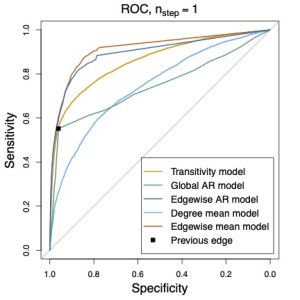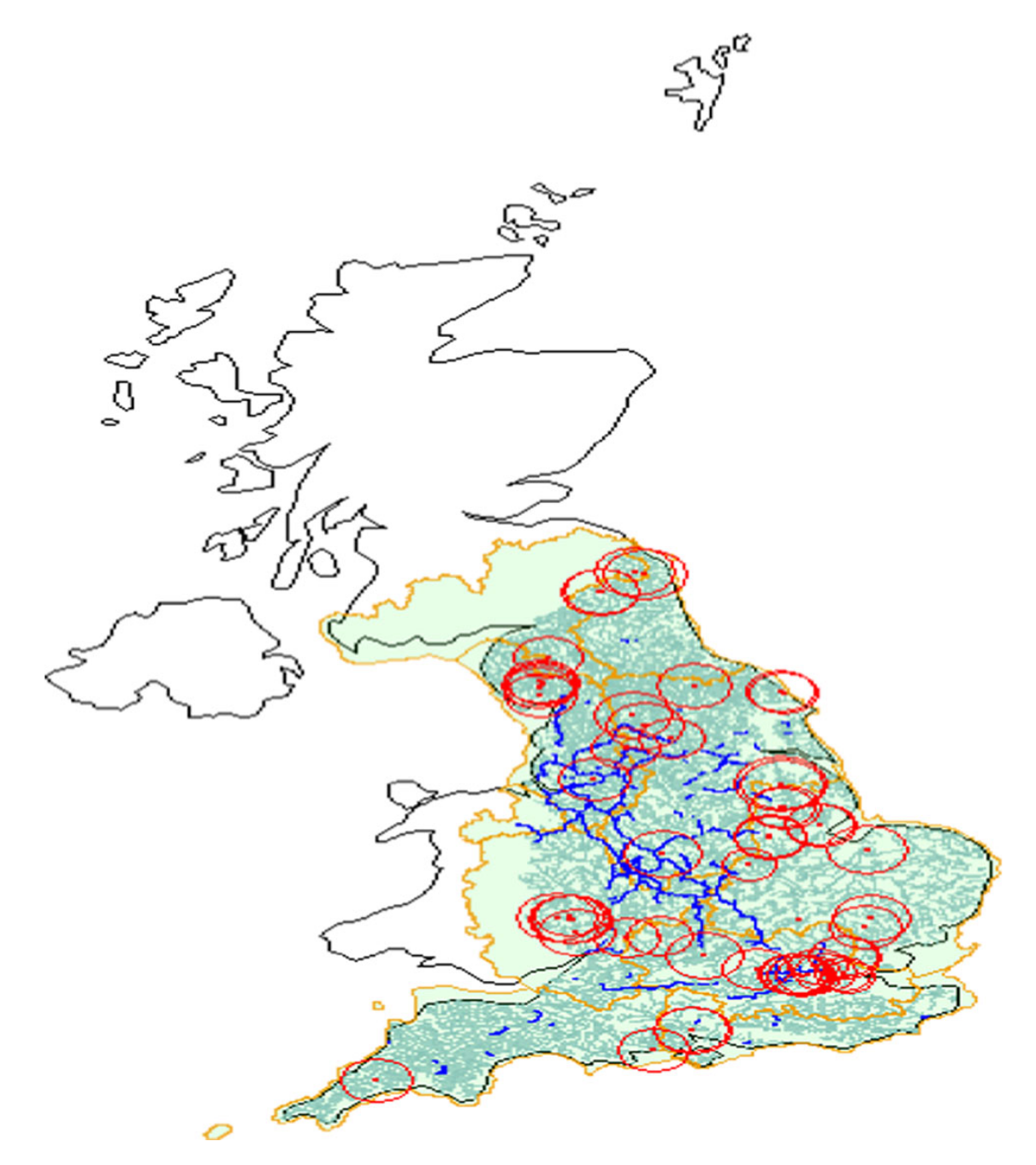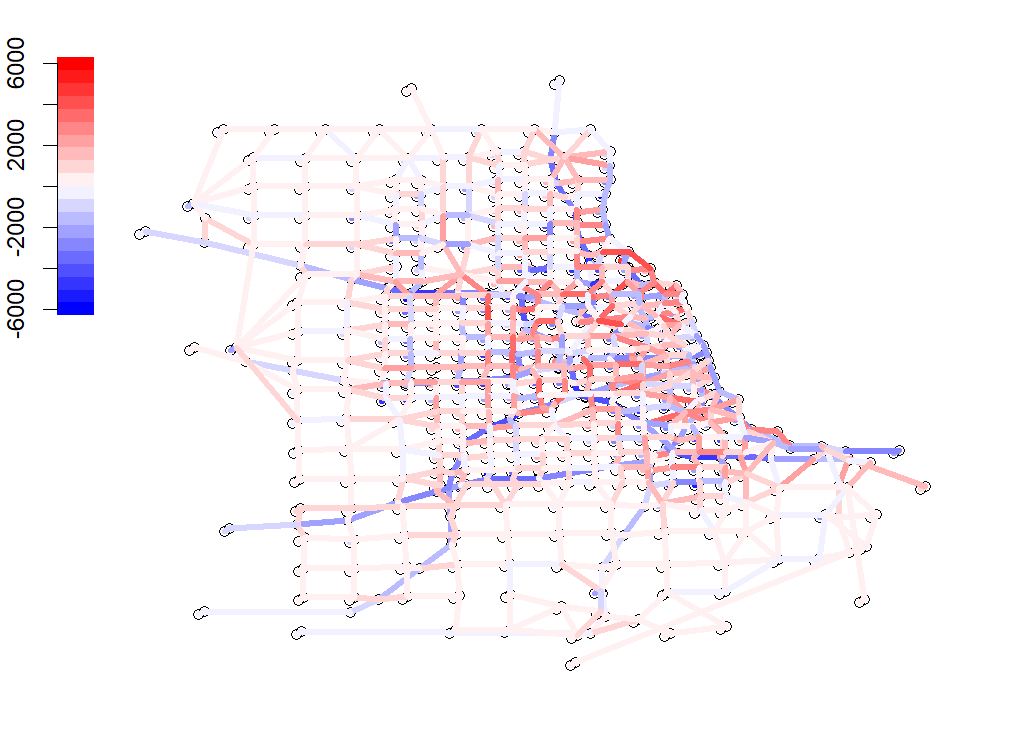between Imperial College, Oxford, Bath, LSE, York and Edinburgh on “Network Stochastic Processes and Time Series”, funded by a multimillion pound EPSRC programme grant and several industry and government partners.
Learn morebetween Imperial College, Oxford, Bath, LSE, York and Edinburgh on “Network Stochastic Processes and Time Series”, funded by a multimillion pound EPSRC programme grant and several industry and government partners.
Learn more
between Imperial College, Oxford, Bath, LSE, York and Edinburgh on “Network Stochastic Processes and Time Series”, funded by a multimillion pound EPSRC programme grant and several industry and government partners.
Learn moreThis 6-year programme (2022-2028) will bring probabilists, statisticians and data scientists together to study large dynamic networks with applications in medicine, transport, cybersecurity, environmental protection, finance, biology and economics.
We are delighted to announce the next of our NeST Online Seminar Series: Dr. Yuqi Gu (Columbia University). Title: TBC
learn moreWe are delighted to announce the next of our NeST Online Seminar Series: Professor George Michailidis (UCLA). Title: TBC
learn moreWe are delighted to announce the next of our NeST Online Seminar Series: Professor Ali Shojaie (University of Washington). Title: TBC
learn moreWe are pleased to announce the NeST-related NetStat workshop on "Statistics and Machine Learning for Networks and High-Dimensional Data".
learn moreWe are delighted to announce the next of our NeST Online Seminar Series: Professor Sofia Olhede (EPFL). Title: Spectral methods to determine dependencies for spatial processes
learn moreRoyal Statistical Society Discussion Meeting on NeST-related project ``New tools for network time series with an application to COVID-19 hospitalisations’ by Guy Nason (Imperial), Daniel Salnikov (Imperial) and Mario Cortina Borja (UCL, Great Ormond Street Institute of Child Health). In person from 3-5pm in Lecture Theatre 130, Department of Math, Huxley Building, Imperial College London, SW7 2AZ
learn moreWe are delighted to announce the next of our NeST Online Seminar Series: Professor Kostas Fokianos (University of Cyprus). Title: Spatio-Temporal Count Autoregression
learn moreWe are delighted to announce the next of our NeST Online Seminar Series: Professor Eric Kolaczyk (McGill University) on "Coevolving Latent Space Network with Attractors Models for Polarization".
learn moreWe are delighted to announce the next of our NeST Online Seminar Series: Dr. Ricardo Rastelli (University College Dubline) on "A latent position model for multivariate time series analysis".
learn moreWe are delighted to announce the first of our NeST Online Seminar Series: Professor Anru Zhang (Duke University) on "High-order Singular Value Decomposition in Tensor Analysis".
learn moreAn invited papers session on Network Stochastic Processes and Time Series has been accepted for JSM2024. Speakers are Professors Mihai Cucuringu (University of Oxford), Tracy Ke (Harvard University) and Carey Priebe (Johns Hopkins University). Precise timing to be announced.
learn moreRSS 2024: Invited Session on Network Stochastic Processes and Time Series
learn moreThe 2024 Workshop on Statistical Network Analysis and Beyond (SNAB2024) is scheduled to take place on June 14-16, 2023 at the Courtyard by Marriott Nassau Downtown/Junkanoo Beach. Over the span of three days, this workshop aims to unite researchers in the field of network science and related disciplines, providing an avenue for the exchange of innovative ideas and recent findings. The workshop will encompass a wide range of topics, ranging from statistical network modeling to more extensive fields such as tensor modeling, deep learning, and text analysis.
learn moreWe are pleased to announce the successful conclusion of NeST’s first Away Day and Annual Meeting, which took place on 3rd-4th October in York. The two-day event featured a rich program of individual and snapshot presentations delivered by leading mid
learn moreOur first ISOC meeting took place on Wednesday, 24 May. It was a productive and engaging session, marked by valuable insights and thoughtful discussions. During the meeting, we had the privilege of having esteemed individuals from diverse backgrounds
learn moreThe first joint event took place online on the 21st of April 2023. There were 70 registered attendees (PhD candidates, Research Assistants, established researchers) from the following institutions: LSE, The Alan Turing Institute, Max Planck Institute
learn moreWe also aim to provide the community with curated network datasets and freely available software for practitioners and scientists wishing to analyse network data.

We propose an autoregressive framework for modelling dynamic networks with de- pendent edges. It encompasses models that accommodate, for example, transitivity, degree heterogenenity, and other stylized features often observed in real network data. By assuming the edges of networks at each time are independent conditionally on their lagged values, the models, which exhibit a close connection with temporal ERGMs, facilitate both simulation and the maximum likelihood estimation in a straightforward manner. Due to the possibly large number of parameters in the models, the natural MLEs may suffer from slow convergence rates. An improved estimator for each compo- nent parameter is proposed based on an iteration employing projection, which mitigates the impact of the other parameters (Chang et al., 2021; Chang et al., 2023). Lever- aging a martingale difference structure, the asymptotic distribution of the improved estimator is derived without the assumption of stationarity. The limiting distribution is not normal in general, although it reduces to normal when the underlying process satisfies some mixing conditions. Illustration with a transitivity model was carried out in both simulation and a real network data set.
Learn more
Data collected over networks can be modelled as noisy observations of an unknown function over the nodes of a graph or network structure, fully described by its nodes and their connections, the edges. In this context, function estimation has been proposed in the literature and typically makes use of the network topology such as relative node arrangement, often using given or artificially constructed node Euclidean coordinates. However, networks that arise in fields such as hydrology (for example, river networks) present features that challenge these established modelling setups since the target function may naturally live on edges (e.g., river flow) and/or the node-oriented modelling uses noisy edge data as weights. This work tackles these challenges and develops a novel lifting scheme along with its associated (second) generation wavelets that permit data decomposition across the network edges. The transform, which we refer to under the acronym LG-LOCAAT, makes use of a line graph construction that first maps the data in the line graph domain. We thoroughly investigate the proposed algorithm’s properties and illustrate its performance versus existing methodologies. We conclude with an application pertaining to hydrology that involves the denoising of a water quality index over the England river network, backed up by a simulation study for a river flow dataset.
Learn more
This article forecasts CPI inflation in the United Kingdom using Random Generalised Network Autoregressive (RaGNAR) Processes. More specifically, we fit Generalised Network Autoregressive (GNAR) Processes to a large set of random networks generated according to the Erdös–Rényi–Gilbert model and select the best-performing networks each month to compute out-of-sample forecasts. RaGNAR significantly outperforms traditional benchmark models across all horizons. Remarkably, RaGNAR also delivers materially more accurate predictions than the Bank of England’s four to six month inflation rate forecasts published in their quarterly Monetary Policy Reports. Our results are remarkable not only for their accuracy, but also because of their speed, efficiency and simplicity compared to the Bank's current forecasting processes. RaGNAR's performance improvements manifest both in terms of their root mean squared error and mean absolute percentage error, which measure different, but crucial, aspects of the methods' performance. GNAR processes demonstrably predict future changes to CPI inflation more accurately and quickly than the benchmark models, especially at medium- to long-term forecast horizons, which is of great importance to policymakers charged with setting interest rates. We find that the most robust forecasts are those which combine the predictions from multiple GNAR processes via the use of various model averaging techniques. By analysing the structure of the best-performing graphs, we are also able to identify the key components that influence inflation rates during different periods.
Learn more
This paper introduces a periodic multivariate Poisson autoregression with potentially infinite memory, with a special focus on the network setting. Using contraction techniques, we study the stability of such a process and provide upper bounds on how fast it reaches the periodically stationary regime. We then propose a computationally efficient Markov approximation using the properties of the exponential function and a density result. Furthermore, we prove the strong consistency of the maximum likelihood estimator for the Markov approximation and empirically test its robustness in the case of misspecification. Our model is applied to the prediction of weekly Rotavirus cases in Berlin, demonstrating superior performance compared to the existing PNAR model.
Learn more
Network point processes often exhibit latent structure that govern the behaviour of the sub-processes. It is not always reasonable to assume that this latent structure is static, and detecting when and how this driving structure changes is often of interest. In this paper, we introduce a novel online methodology for detecting changes within the latent structure of a network point process. We focus on block-homogeneous Poisson processes, where latent node memberships determine the rates of the edge processes. We propose a scalable variational procedure which can be applied on large networks in an online fashion via a Bayesian forgetting factor applied to sequential variational approximations to the posterior distribution. The proposed framework is tested on simulated and real-world data, and it rapidly and accurately detects changes to the latent edge process rates, and to the latent node group memberships, both in an online manner. In particular, in an application on the Santander Cycles bike-sharing network in central London, we detect changes within the network related to holiday periods and lockdown restrictions between 2019 and 2020.
Learn more
Data collected over networks arise in a number of scientific, engineering and industrial applications, in which the datapoints are noisy observations relating to a process of interest over the graph structure. In this article we propose a novel multiscale representation of data on the edges of a network. In contrast to other methods in the literature which employ expensive node to edge data transformations, our decomposition acts directly on the network edges. Using our method, we propose an efficient edge denoising algorithm, termed E-LOCAAT, which displays good performance across a range of data scenarios, particularly when the number of edges is large. The proposed method is illustrated using extensive simulations and we demonstrate its applicability on a real-world dataset arising in road traffic modelling.
Learn more